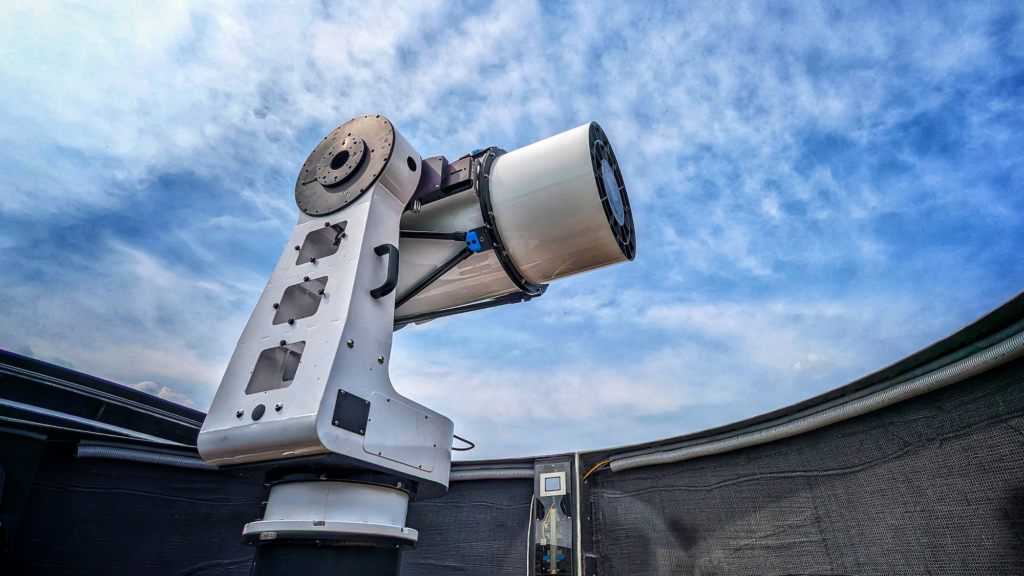
Slingshot Aerospace operates a network of telescopes for keeping tabs on objects in low Earth orbit. (Slingshot)
WASHINGTON — The Commerce Department has awarded Slingshot Aerospace a $13.3 million contract to build a web portal to access to its nascent space tracking database — slotting into place the last piece of the puzzle that will allow the Pentagon to wean commercial and foreign satellite operators from the military’s increasingly threat-oriented system for monitoring the heavens.
The Colorado-based startup will develop the so-called “presentation layer” user interface for Commerce’s Traffic Coordination System for Space (TraCSS), based on its “Slingshot Beacon” space traffic management software, according to a company press release today. Slingshot’s work, which includes a year-long development phase and four one-year options, will be supported by COMSPOC and T and T Consulting Services, the release added.
“We are delighted to welcome Slingshot to the team to help us bring TraCSS to the entire world,” said Richard DalBello, director of the National Oceanographic and Atmospheric Administration’s Office of Space Commerce (OSC), said in a NOAA press release today. “Their visualization tools will make our technical data accessible via a modern interface reflecting the latest innovations in software and user experience design.”
“Deploying the TraCSS user interface is the next major step in operationalizing U.S. civil space traffic coordination,” said Audrey Schaffer, Slingshot vice president of strategy and policy.
TraCSS is being developed by OSC, which was directed to take over traffic coordination responsibilities from the Defense Department following the issuance of Space Policy Directive 3 (SPD-3) in 2018. The TraCSS.gov website is expected to be online and begin the transition of all commercial users from the US Space Command’s Space-track.org in late 2025.
Slingshot has been working with OSC almost from the get-go, as the office sought to build up expertise in using open-source data from commercial and non-military telescopes and radars for space situational awareness, including the ability to calculate the likelihood of potential on-orbit collisions and warn operators in advance.
For example, the company was among several chosen for OSC’s Consolidated Pathfinder project to gather data about objects in low Earth orbit (LEO) launched in January via contracts managed via NASA’s Global Data Marketplace. Likewise it was involved in an earlier data-gathering effort back in December 2022 was conducted jointly by OSC and the Pentagon.
Space Force: Vive la difference, advises a new AEI policy paper
The AEI paper, authored by Senior Fellow Todd Harrison, recommends ditching the standup of Space Futures Command and creating a new organizational structure that combines acquisition and operational functions around mission areas.
























